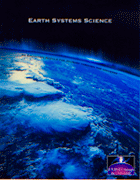Earth Systems Science is one of several Education Modules developed for the Journey through the Universe program. The module focuses on the interactions of Earth's four systems: biosphere, atmosphere,  hydrosphere, and geosphere. The biosphere encompasses all life, from complex human beings to single-celled organisms. The atmosphere is the shell of gases surrounding the Earth. We live at the bottom of this dynamic ocean of air, which exhibits meteorological phenomena—weather—on both local and global scales. The gaseous water in the atmosphere—together with all Earth’s water in every form: solid, liquid, and gas—comprise the hydrosphere. The vast rocky and metallic bulk of the Earth is defined as the geosphere. hydrosphere, and geosphere. The biosphere encompasses all life, from complex human beings to single-celled organisms. The atmosphere is the shell of gases surrounding the Earth. We live at the bottom of this dynamic ocean of air, which exhibits meteorological phenomena—weather—on both local and global scales. The gaseous water in the atmosphere—together with all Earth’s water in every form: solid, liquid, and gas—comprise the hydrosphere. The vast rocky and metallic bulk of the Earth is defined as the geosphere. Each of these systems is remarkably dynamic over both long and short timescales. It is also the case that no one system stands alone. Complex processes that shape and define the Earth we know are the means by which these four systems interact with one another. One cannot, for instance, study weather in the atmosphere, or atmospheric evolution, without understanding the dramatic impact on weather from processes involving the geosphere, hydrosphere, and biosphere. The lessons contained in this Education Module, at every grade level, explore the nature of Earth’s systems, and demonstrate that observed phenomena on Earth are not unique to a particular system but arise from the interaction of these systems. And a true understanding of any phenomenon requires an understanding of all four systems. It is a systems approach to Earth science. The Earth Systems Science Education Module includes an Education Unit at three grade levels: elementary (K-4); middle (5-8); and high school (9-12). Each Unit contains lessons comprised of content overviews, inquiry-based hands-on activities, assessment rubrics, resource listings, student worksheet masters, and answer keys. The lessons were developed from the ground up from national science education standards and benchmarks. Lessons target core standards and benchmarks through inquiry-based, hands-on activities whose objective is deep conceptual understanding of both content and process. | 